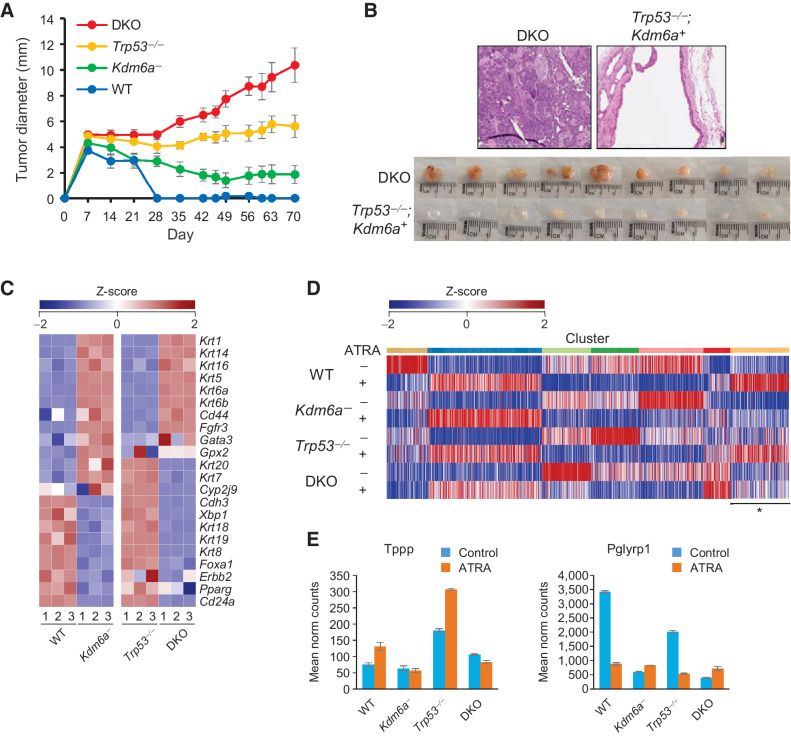Figure 2.
Kdm6a loss alters differentiation and cooperates with Trp53 deletion to confer tumorigenicity in mouse urothelial organoids. A, Effect of Kdm6a and Trp53 deletion on organoid growth as subcutaneous xenografts. DKO denotes combined Kdm6a and Trp53 knockout. B, Hematoxylin and eosin (top) and gross (bottom) images of Trp53−/− and DKO organoid xenografts. Trp53−/− organoids formed cystic masses, and DKO organoids formed cancers with squamous differentiation. C, Heat map of luminal and basal marker expression according to MDACC classification. D, K-means clustering of retinoic acid–responsive genes in mouse urothelial organoids. Cluster denoted by asterisk shows genes with altered response to 100 nmol/L ATRA in Kdm6a-deficient (Kdm6a and DKO) organoids. E, Examples of two retinoic acid target genes that exhibited an abnormal response to ATRA treatment in Kdm6a-deficient organoids.

